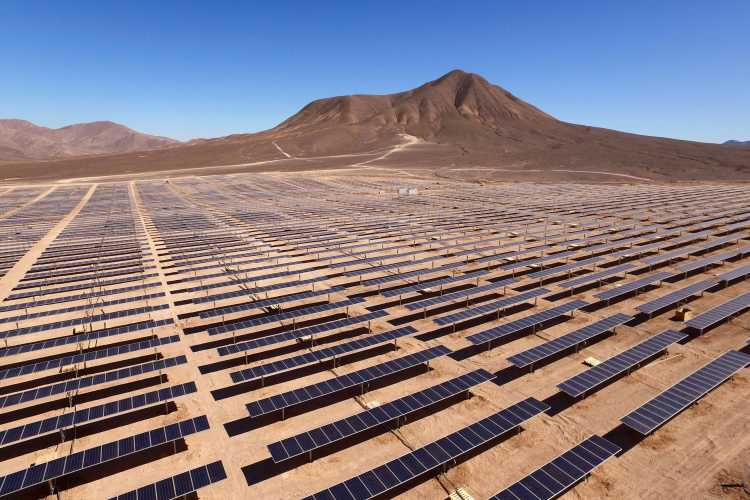India has set an ambitious target of 500 GW renewable energy capacity by 2030, aimed at reducing carbon footprints, addressing climate change challenges and emission targets, diversifying India’s energy sources, and harnessing sustainable energy for a resilient and developed India. Solar energy plays a key role in this plan, with an ambitious target of 280 GW. As of July 2024, approximately 87.2 GW of solar capacity has already been installed.
A favorable policy regime, the Prime Minister’s personal enthusiasm and oversight, growing concern and awareness among industry stakeholders and consumers, and most importantly, production-linked incentives (PLI), have been instrumental in boosting domestic solar manufacturing, reducing import dependence, and lowering the costs of solar modules and components. PLI has spurred investments in new manufacturing capacities, technological advancements, and the development of technical and managerial capabilities over the last five years, albeit primarily in downstream areas of the production value chain.
READ | STPI to take startup revolution beyond metro hubs
Solar energy: Challenges abound
However, there have been limited gains in key cost areas of upstream production, such as polysilicon, ingots, and wafer manufacturing, which are critical inputs for photovoltaic (PV) cells. Challenges in the initial and crucial stages of the production value chain persist, including high capital costs for technology and infrastructure, energy-intensive production processes, lack of advanced technology and R&D, limited access to high-quality raw materials, reliance on imports for key inputs, production quality and consistency issues, and inadequate domestic supply chain infrastructure.
Despite these hurdles, the PLI scheme has been crucial in accelerating the growth of India’s solar sector and supporting the country’s transition to cleaner energy sources. Recognising these benefits, the government of India plans to extend the PLI incentives for the PV cell industry. To chart the path forward, it is important to understand the key challenges and identify the best strategies for building a robust and self-sufficient solar industry.
Challenges in the PV value chain
India’s primary challenges in fostering a viable PV cell manufacturing ecosystem lie in the early stages of the production value chain, which account for up to 55% of the cost of a PV cell. Unfortunately, despite the PLI incentives, there have been no significant investments in polysilicon and ingot production, although wafer manufacturing has seen some progress.
India’s polysilicon and ingot production (HSN-280469) remains limited, with heavy reliance on imports from China, Singapore, South Korea, and Malaysia. The capital-intensive nature of polysilicon production has deterred domestic investors. Additional challenges include high setup costs, complex technological requirements, energy-intensive production processes, limited access to raw materials, and the need for significant infrastructure investments.
Similarly, ingot production in India is still in its nascent stages and depends entirely on imported polysilicon. The sector faces high technology gaps, particularly in energy efficiency and the cost of machinery. Ensuring consistent quality and overcoming variability in ingot production are also significant challenges that affect the efficiency of downstream manufacturing stages.
While the wafer production sector in India has grown over the past five years, supported by investments and government incentives, it still faces challenges. High energy consumption and technological limitations reduce the competitiveness and scalability of Indian companies, especially in the face of cheap imports from China. The government aims to focus on these three critical stages of the value chain through an extended PLI scheme.
On the downstream side, India has made notable progress in expanding its cell manufacturing capabilities. However, domestic cell production still faces stiff competition from more advanced international technologies. The rapid expansion of solar panel assembly in India, supported by government incentives, also faces challenges, particularly due to a high reliance on imported components, infrastructure constraints, and logistical issues that impact cost-efficiency.
Partnering for competitive advantage
Given the high investment requirements, energy and infrastructure costs, environmental concerns, and the sophistication needed to compete globally, Indian policymakers should explore partnerships with other countries to boost polysilicon production and reduce reliance on China.
When negotiating future free trade agreements (FTAs) and economic partnerships, India should leverage trade relationships with countries like Oman, the UAE, and other Gulf nations. Oman’s low energy costs and quartz reserves make it a viable partner for sourcing polysilicon and ingots. India should focus on collaborating in this area during FTA negotiations. Similarly, other Gulf countries, with their low energy costs—a key factor in converting sand quartz into ingots, requiring heating at 1,600°C to 2,700°C—present strategic opportunities. India can contribute technological know-how and managerial expertise in wafer production, cell manufacturing, and panel assembly.
By strategically leveraging the capabilities of trade partners like Oman, India can scale up its production of polysilicon and ingots, critical components in solar cell manufacturing. These partnerships can help mitigate supply chain risks, reduce dependence on single sources, and strengthen India’s position in the global solar market. Extending PLI incentives to these upstream sectors can further boost domestic production capabilities, positioning India as a leader in solar energy.
The focus should be on optimising domestic strengths, such as solar panel assembly, where India holds a competitive advantage, by improving efficiencies and lowering costs. This dual strategy—enhancing domestic capacities while leveraging the strengths of trade partners—aligns with India’s vision of becoming a developed nation and a global leader in the solar sector, supporting its southern counterparts, and contributing to sustainable economic growth.
(Aaqib Chaudhary is a Ph.D. scholar and Dr Ram Singh is Professor & Head, IIFT, New Delhi. Views expressed are personal.)

